Mar 22, 2025 – 34th Day of the 100-Day Dharma Talk, Jungto Dharma School and Sutra Course Basic Class Entrance Ceremony
Hello, this is the 34th day of Venerable Pomnyun Sunim’s 100-Day Dharma Talk. Today marks the first step for new students entering the Jungto Dharma School and Sutra Course.
Magnolias are bursting into soft buds, and light green shoots are emerging from every branch. As spring silently seeps into our surroundings, new students begin their learning journey with excitement and anticipation.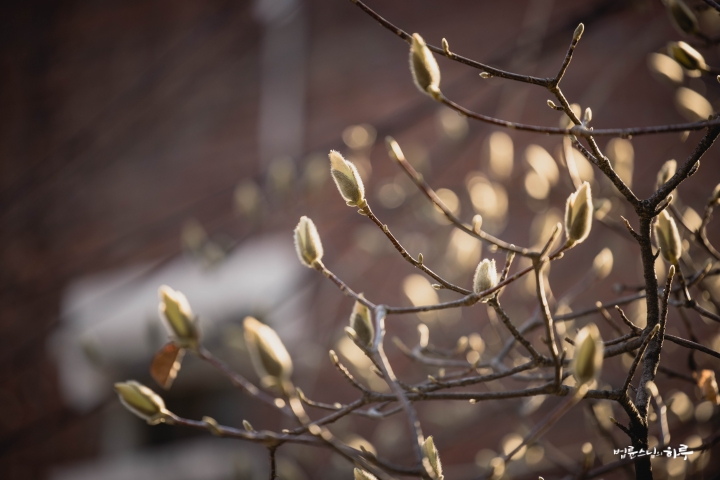
After completing his morning practice and meditation, Sunim spent the morning working in his office. Following lunch, at 2 PM, he began the entrance ceremony for the Jungto Dharma School Basic Class. The Basic Class refers to courses conducted online, following the established format. This name distinguishes it from the in-person lectures held at the Seoul Jungto Social and Cultural Center during the 100-day period.
For this term’s Jungto Dharma School Basic Class, approximately 1,400 students from both domestic and international locations have enrolled. With 198 classrooms established, they have begun their five-month journey. Once everyone connected to the video conference, a time of celebration and welcome commenced.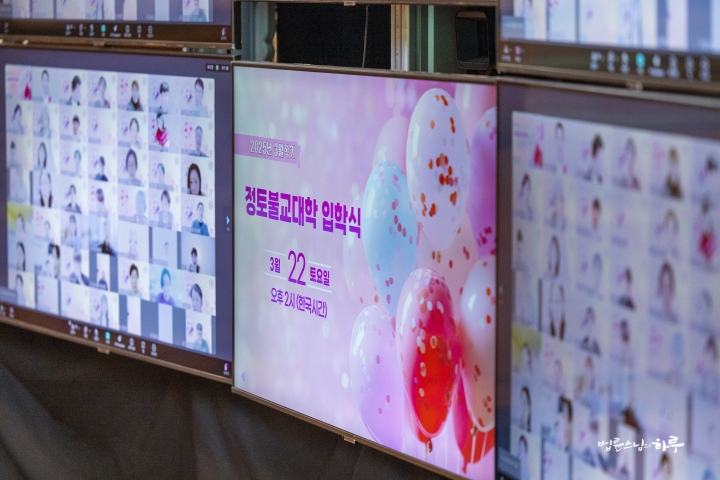
After watching congratulatory messages and performances from alumni who had previously graduated from the Dharma School, Sunim listened to the new students’ thoughts. Hearing each person’s reflections revealed their excitement and expectations for this new beginning.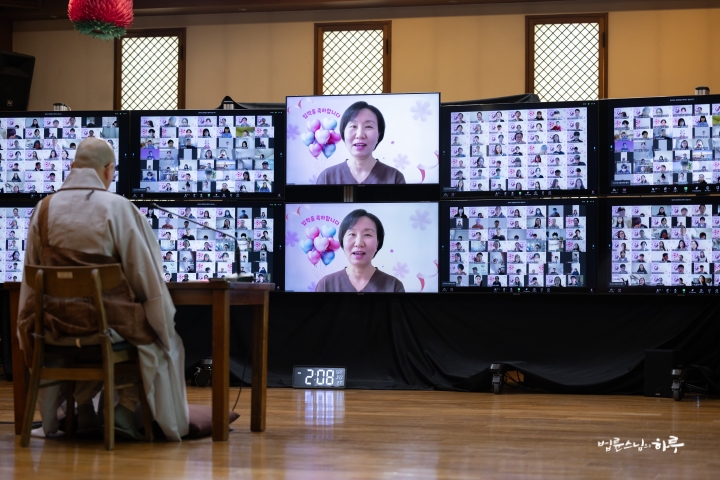
“Although I regularly visited temples and prayed diligently, I didn’t really understand what Buddhism was. As my frustration grew, a friend introduced me to the Jungto Dharma School. I’m thrilled to be able to study Buddhism through Venerable Pomnyun Sunim’s explanations.”
“After listening to Sunim’s Dharma Q&A, 90 percent of my life concerns disappeared. When I heard that self-blame comes from thinking too highly of oneself, my mind immediately felt lighter. I want to graduate from the Jungto Dharma School and become a freer, happier person.”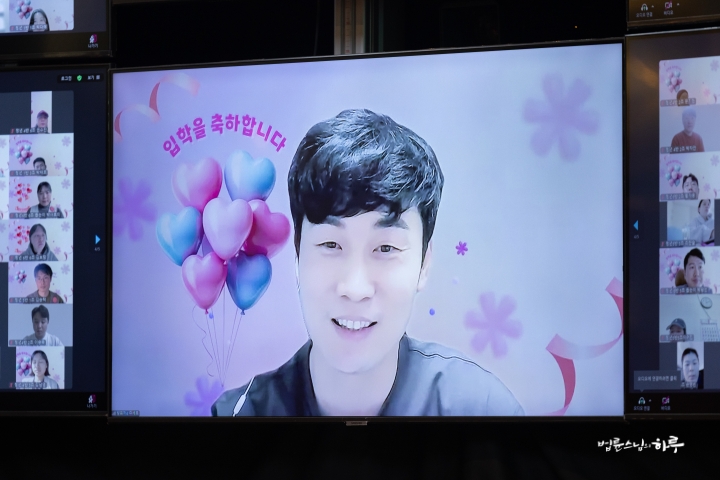
Following the welcome address from the President of Jungto Society, everyone requested a commemorative Dharma talk from Sunim for the entrance ceremony. While conveying his congratulations, Sunim explained in detail what students would learn at the Jungto Dharma School.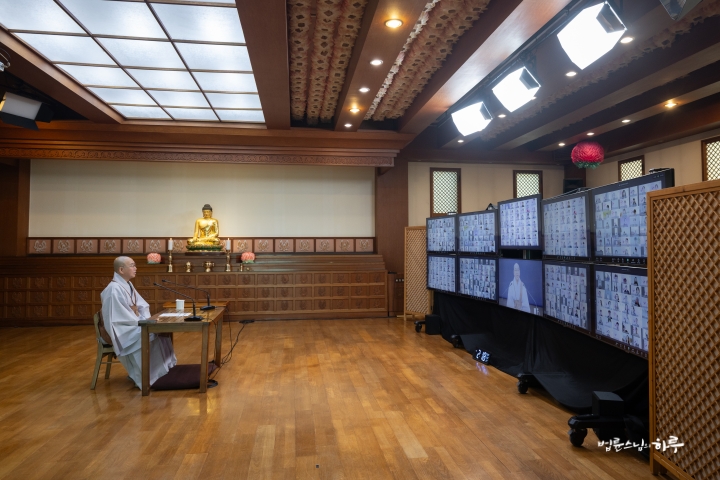
“Congratulations to all new students of the Jungto Dharma School. Today we begin the Spring 2025 semester of the Jungto Dharma School.
While there are benefits to attending lectures in person at the Jungto Social and Cultural Center, most of your time would be spent just listening to lectures. Travel time is also considerable. However, Buddhism as a practice emphasizes direct personal experience over simply listening to lectures. In the online Jungto Dharma School, we use the convenience of online tools so you can listen to lectures at home at your own pace. Then, once a week, we meet in an online space to discuss what you’ve learned and share your experiences. You’ll also practice exercises related to the Dharma talk topics. After applying and practicing what you’ve learned in relationships with your spouse, children, parents, and colleagues, you’ll share insights like ‘this worked,’ ‘this didn’t work,’ or ‘I encountered this problem when I tried it.’ The Jungto Dharma School places great importance on direct personal experience in your life. This approach is far more advanced than simply listening to lectures. However, this is difficult to implement in offline, in-person lectures where hundreds of people are seated listening, making it impossible for everyone to share their thoughts. Therefore, in the Jungto Dharma School Basic Class, you’ll be organized into groups of eight, guided by a facilitator and co-facilitator, allowing you to study through consistent dialogue and exchange.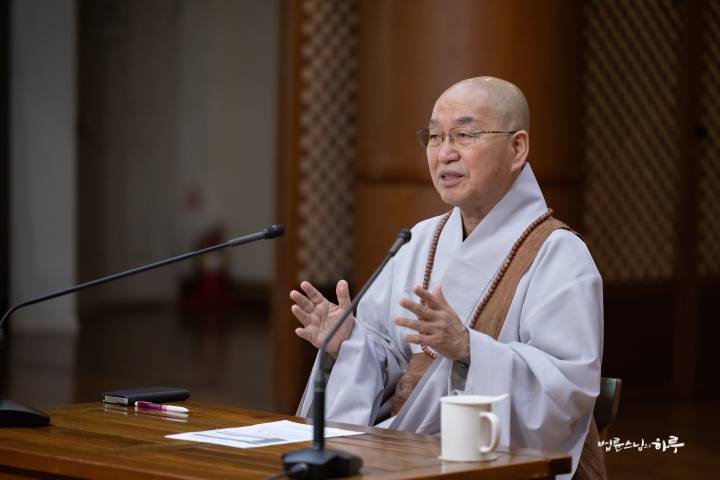
Studying to Overcome Suffering by Awakening from My Ignorance
What we learn at Jungto Dharma School is “Buddhism as practice.” “Buddhism as practice” is realizing that my suffering doesn’t arise because of sins from past lives, punishment from God, or bad fortune, but because of my own ignorance and foolishness. My suffering isn’t caused by my husband, children, or money, but by my own ignorance. Conflicts between spouses don’t occur because of incompatibility, but because I cling too stubbornly to my own perspective.
However, in “Buddhism as religion,” people believe that all problems can be solved if a powerful, omniscient deity helps them. While religious Buddhism holds the belief that Avalokitesvara Bodhisattva with a thousand hands and eyes will help resolve suffering, Buddhism as practice teaches that awakening from ignorance eliminates suffering. That’s why religious Buddhism is also called “other-power faith” – meaning one borrows power from others to solve problems. Buddhism as practice, on the other hand, is called “self-power faith” because one liberates oneself from suffering. To do this, one must accurately assess the situation, identify “what is the problem right now?”, determine the cause of the problem, and resolve that cause to be free from suffering. 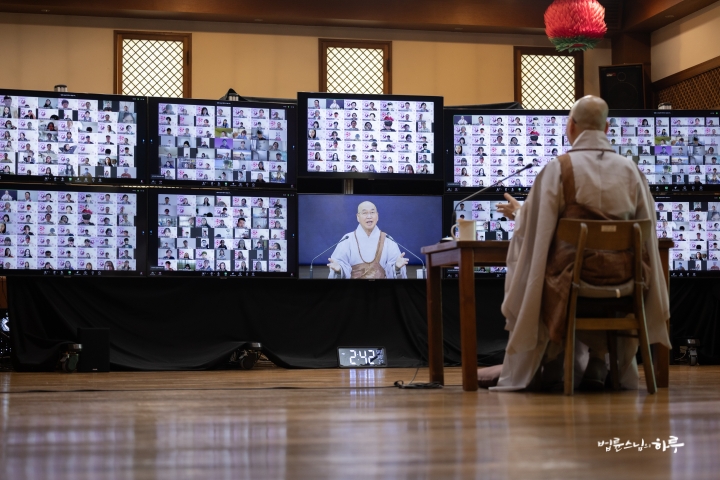
The Graduation Standard for Jungto Dharma School: Has Your Suffering Decreased?
When viewed only intellectually, Buddhism doesn’t differ much from philosophy. However, Buddhism as a practice differs from philosophy in that it emphasizes not just understanding concepts but actually experiencing them. The most important thing is whether studying Buddhism has helped you resolve marital conflicts, reduced your anger or irritation toward your children, or decreased your stress levels. Therefore, the graduation standard for Jungto Dharma School is not how much Buddhist doctrine you’ve learned. If you can answer “yes” when you ask yourself, “Has my suffering decreased since I enrolled?” “Have more of my questions been resolved?” “Has my stress been reduced?” then you qualify for graduation.
Does Buddhism as a practice contain no religious or philosophical elements? It does. Sunim’s Dharma talks include many doctrinal and philosophical contents. While the overall curriculum focuses on Buddhism as a practice, about 30 percent involves Buddhism as philosophy, and about 10 percent involves Buddhism as religion. So while listening to the Dharma talks, you might sometimes want to question, “Sunim, isn’t that a religious perspective?” or “Sunim, isn’t that a philosophical perspective?” Please keep in mind that while you’ll primarily learn Buddhism as a practice, you’ll also learn some philosophical and religious elements. However, I want to emphasize that the main focus is Buddhism as a practice.
Now as the weather warms, forsythia blooms and spring is in full swing. I hope that through your studies at Jungto Dharma School, your frozen hearts will gradually thaw, bringing not just spring to the outside world but also a warm spring to your hearts.” 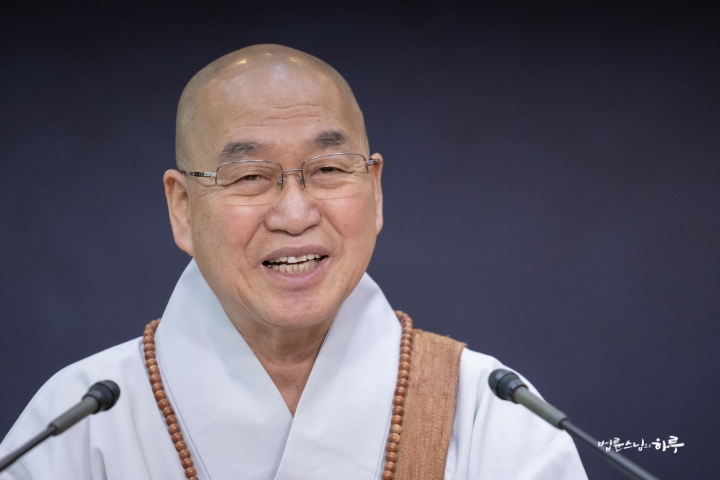
After the commemorative Dharma talk for the entrance ceremony concluded, all participants entered their group video conference rooms to exchange initial greetings and introduce themselves.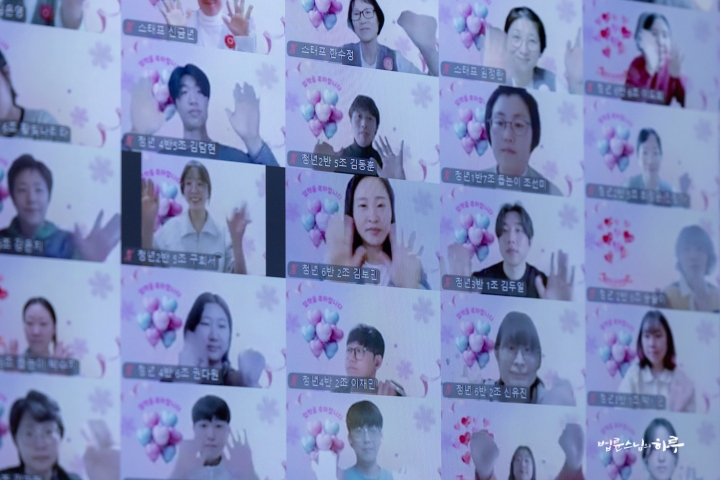
Following a short break, the entrance ceremony for the Jungto Sutra Course began at 4 PM. Approximately 1,140 students who enrolled in the March Sutra Course connected to the live broadcast. A total of 164 online classrooms were established for the five-month course.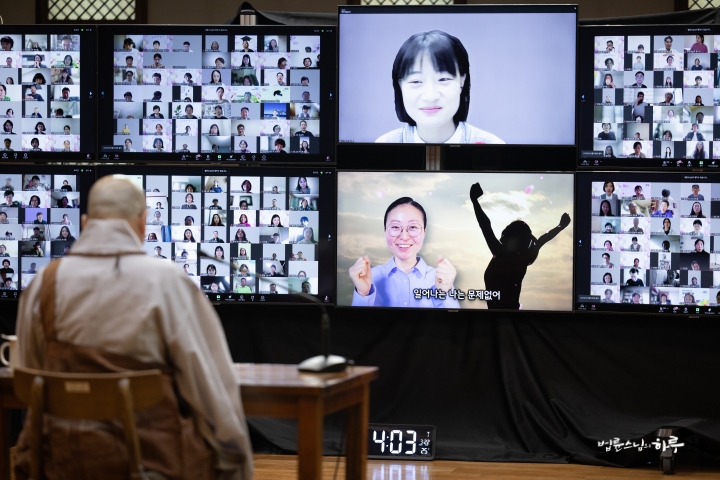
After senior graduates presented congratulatory performances and welcome messages, there was time to hear from the new students about their thoughts on joining the program.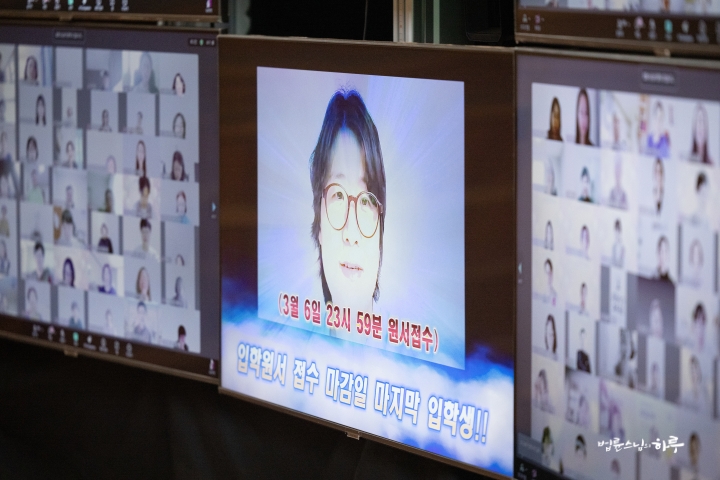
“After graduating from the Buddhism Course, my interest in studying sutras grew even stronger. I enrolled hoping that studying the sutras will help me live a more free and happy life.”
“During the Buddhism Course, I realized how precious it was to meet with fellow practitioners once a week to review our practice. That’s why I wanted to continue with the Sutra Course.”
“This is my fourth time enrolling in the Sutra Course. This year, I really want to graduate! Let’s all study hard and do our best!”
Following this, everyone listened to the welcome address from the President of Jungto Society and then collectively requested a commemorative Dharma talk from Sunim. Sunim provided a detailed explanation of the Sutra Course curriculum structure and characteristics, as well as the proper mindset for understanding and accepting the sutras.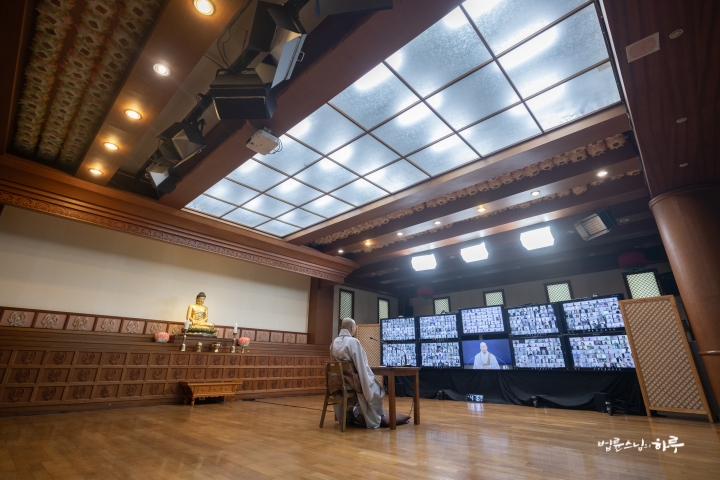
“Congratulations to all new students of the Sutra Course. I sincerely congratulate you for diligently studying the Jungto Buddhism Course last fall and winter, and now enrolling in the Sutra Course as spring begins in March.
In the Jungto Buddhism Course, you studied the fundamental philosophy of Buddhism and the life of the Buddha. You could say you studied the essence of the teachings directly expounded by the historical figure Shakyamuni Buddha. Looking deeper, you studied not only what the Buddha directly taught but also the teachings that were systematized and formalized during the 500 years after the Buddha’s parinirvana. However, about 500 years after the Buddha passed away, Buddhism gradually became more religious or academic in nature. As a result, many of the Buddha’s original teachings disappeared or became distorted. People who recognized this problem gathered together and initiated a new Buddhist movement. 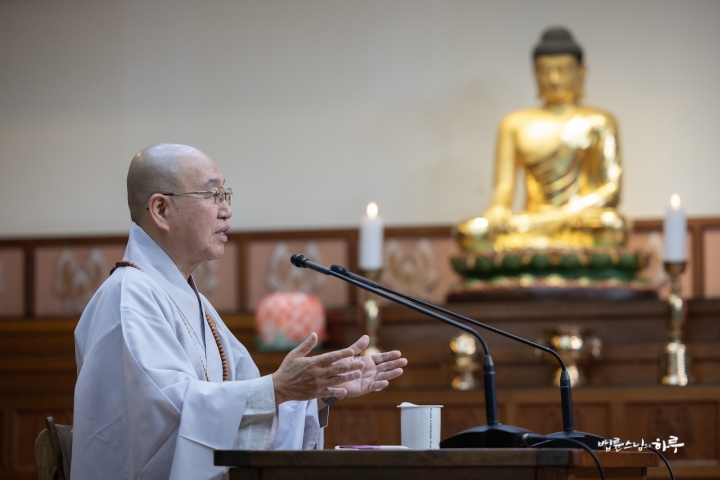
A New Buddhist Movement Seeking to Return to the Buddha’s Original Teachings
Traditional Buddhism was centered around monastics who had renounced secular life. However, in the new Buddhist movement called ‘Mahayana Buddhism,’ lay practitioners known as bodhisattvas became the center of the Sangha. Although monastics also participated in this movement, the main participants were primarily lay practitioners. Those who initiated this new Buddhist movement called themselves ‘Mahayana Buddhism’ and referred to the existing Buddhism as ‘Hinayana Buddhism.’ After several hundred more years, Buddhism combined with traditional Indian thought and transformed into forms like folk Buddhism, which is called Vajrayana or Tantric Buddhism.
Thus, Buddhism is divided into three branches: Theravada (Hinayana Buddhism), Mahayana (Great Vehicle Buddhism), and Vajrayana (Diamond Vehicle Buddhism, Tantric Buddhism). When Hinayana Buddhism, Mahayana Buddhism, and Tantric Buddhism were transmitted to China, they arrived almost simultaneously. Although the changes in Buddhism in India occurred over several centuries, various types of Buddhism were transmitted to China during the same period. Among these, Mahayana Buddhism developed most extensively in China. Later, as Mahayana Buddhism again became more religious and philosophical, Seon Buddhism emerged as a movement centered on practice. The Platform Sutra of the Sixth Patriarch was a teaching they valued as much as the sutras.
Korean Buddhism can be described as an integrated Buddhism that inherited Hinayana Buddhism, Mahayana Buddhism, and Seon Buddhism. That’s why Jungto Society ensures that its members learn Hinayana sutras, Mahayana sutras, and Seon Buddhism. The fundamental philosophy of Buddhism and the life of the Buddha that you learned in the Buddhism Course can be considered the core ideas of Hinayana Buddhism. In contrast, what you are about to learn in the Sutra Course represents the core ideas of Mahayana Buddhism and Seon Buddhism. In particular, the Sutra Course categorizes the types of Buddhism in detail, allowing you to cover most of Buddhism comprehensively. However, the study of Tantric Buddhism is not included in the curriculum due to time constraints. 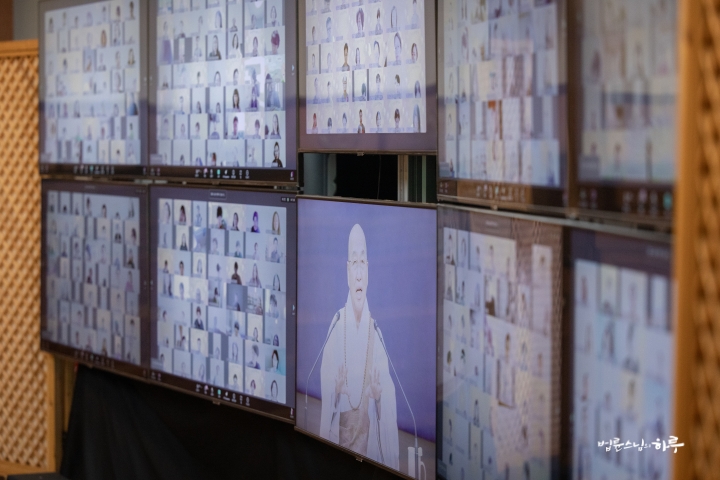
Cultivate Love Instead of Hatred
Let’s take a closer look at what is taught in the Jungto Sutra Course. First, we examine the historical background of the Mahayana Buddhist movement within Buddhist history. Next, we study the Diamond Sutra, one of the early Mahayana texts. We then learn about the history of Mahayana Buddhism and study the Heart Sutra among the Mahayana scriptures. For the Lotus Sutra and Avatamsaka Sutra, two of the most famous Mahayana texts, we focus on summarized content rather than studying the original texts. We then explore the emergence of Seon Buddhism after Buddhism spread to China, examining this within the context of Chinese Buddhist history. Next, we study the Platform Sutra of the Sixth Patriarch, which holds significant meaning in Seon Buddhism. After learning about Korean Buddhist history and the current state of Buddhism worldwide, we finally study the new Buddhist movements taking place in various countries today.
The Jungto Sutra Course is structured as described above. However, the most important aspect of the course is practicing and experiencing “how to use our minds.” The practice exercises are more in-depth compared to the Jungto Buddhism Course. For example, while in the Buddhism Course we might learn that “there is inherently nothing to hate” when we feel hatred toward someone, in the Sutra Course we learn to “cultivate love instead of hatred.” This is because Mahayana Buddhism teaches the principle that when we cultivate love, hatred naturally disappears. 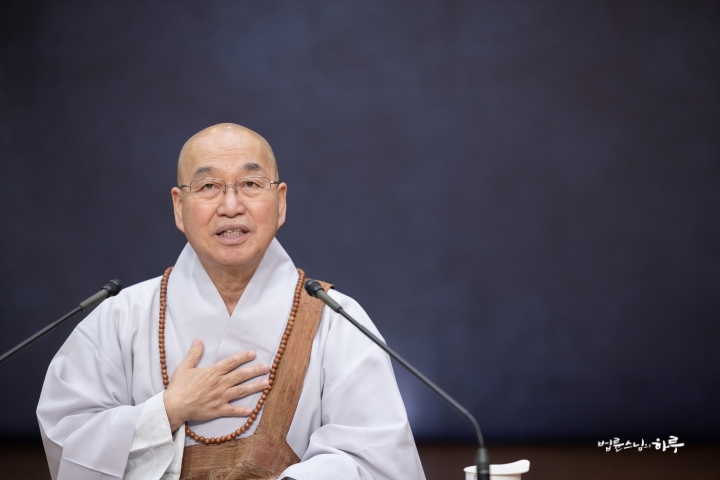
The greatest characteristic of Mahayana Buddhism is its proactivity and voluntarism. When you are desperately trying to gain something from others, Fundamental Buddhism or Hinayana Buddhism teaches, “Abandon the thought of gaining,” or “There is nothing to gain in the first place.” In contrast, Mahayana Buddhism teaches, “Cultivate a mind of giving.” Mahayana Buddhism explains that when you have a giving mind, the petty mind that seeks to gain naturally disappears. Rather than having a narrow mind that says, “I won’t do this, but I should do that,” Mahayana emphasizes embracing everything and setting great vows. The Diamond Sutra and the Heart Sutra, Mahayana scriptures, teach these proactive methods to eliminate suffering.
There is a saying, “White heron, do not go where crows gather.” Similarly, Hinayana Buddhism teaches that one should stay away from impure places because it is easy to become tainted. When you are with someone who swears, you begin to swear; when you are with swindlers, you begin to swindle. The world we live in is impure, and living in it makes it easy to become tainted without realizing it. Hinayana Buddhism teaches withdrawal from the world to practice quietly in the forest. However, Mahayana Buddhism teaches, “Go where crows gather and wash away their black stains.” Rather than avoiding the impure world, Mahayana Buddhism teaches entering into it, having compassion for sentient beings, and transforming them. It states that the moment you develop the mind to help others, you are already advancing to a state free from suffering. The process of transforming sentient beings is not separate from personal practice; rather, the process itself is practice. This is the proactive nature of Mahayana Buddhism. 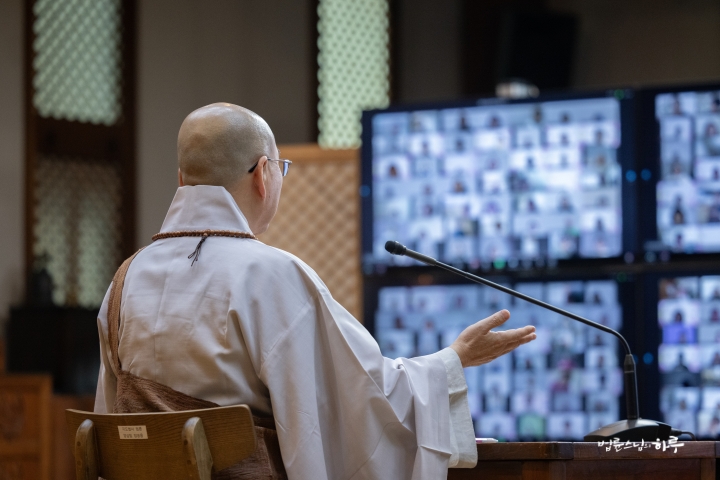
Due to these characteristics, the teachings of Mahayana Buddhism can be well applied to everyday life. Of course, they might seem somewhat abstract at first. While studying in the Sutra Course, you might think, “I’m not sure what I’m supposed to do with this teaching.” In the Buddhism Course, concepts were clear, like “1 plus 1 equals 2,” but in the Sutra Course, the teachings may feel more ambiguous. It’s similar to quantum computing theory. Traditional computers represent information as either 0 or 1, but quantum computers can simultaneously exist in states that could become either 0 or 1, making them difficult to understand immediately. Similarly, Mahayana Buddhism teachings are challenging if you try to understand them only intellectually. However, these teachings can be actively applied in real life, so your understanding will deepen through practice. This allows for a much deeper study compared to the Buddhism Course. Approaching the Sutra Course with this perspective will make it a more meaningful experience.
Buddhism has a 2,600-year history. The Sutra Course covers not only Buddhism’s journey through India, China, and Korea but also the current state of Buddhism worldwide. This allows for a broader learning experience. While deepening your personal practice, you can understand the entire history of Buddhism and develop insight into viewing the world. I hope you will complete the Sutra Course. If your goal is solely personal practice, graduating from the Buddhism Course may be sufficient. However, if you wish to help others in their practice with a broader mindset, completing the Sutra Course is necessary. Only by graduating from the Sutra Course can you meet the basic requirements to become a leading member who conducts the Buddhism Course.
Why Buddha’s Teachings Are Needed as Social Conflicts Intensify
In our world, people always say, “These are the end times” in every era. Looking back at South Korea’s past, each period was considered the worst at that time. However, reflecting on our country’s history through the 80s and 90s, despite social turmoil and confusion, there was definite progress. Of course, not all chaos leads to development. In some cases, like the late Joseon Dynasty, confusion led to the collapse of the nation. So what about now? Is the current turmoil in South Korea a sign of decline? Or is it part of a process toward greater development? Is this confusion a phenomenon that appears during development, or is it a sign leading to national collapse? 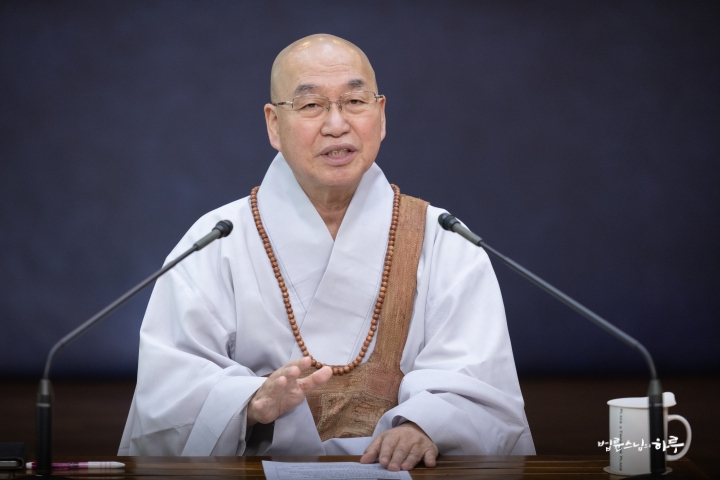
Until now, the turmoil in South Korean society has been part of the development process. Looking back, there were no fatal side effects that could lead to national collapse. However, the current pattern of social confusion appears somewhat different from before. In sports competitions, athletes compete fiercely to win, but once the game ends and the outcome is determined, they typically accept the results. That’s why after a game, they can shake hands and even go eat together.
But today’s social phenomena are like warfare. When people refuse to accept results regardless of the outcome, it raises concerns about social collapse. If people claim election fraud and refuse to accept the results, or if they don’t accept court rulings, this could be a sign that we’ve passed the peak of the parabola and are heading toward national collapse.
To determine whether the current turmoil is part of development or a sign of social collapse, we need to compare it with past periods of confusion. We should assess whether it resembles a friendly match or a violent confrontation. The chaos during past democratization movements maintained basic order despite competition, but the current situation is like a war where neither side will yield an inch. That’s why some people describe the ongoing social phenomena as “civil war.” 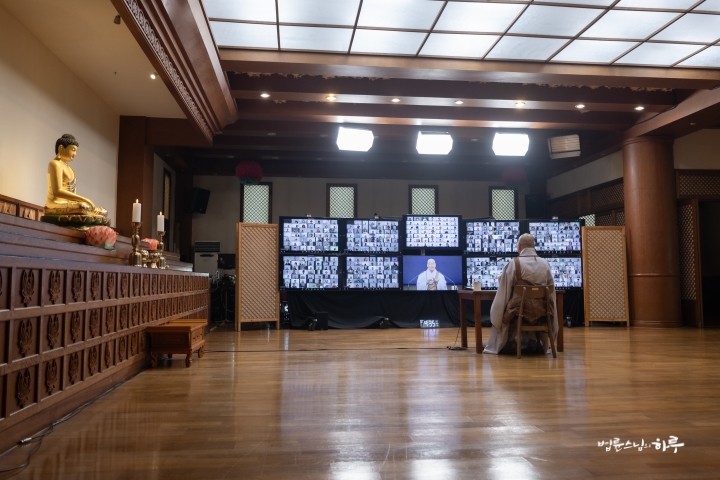
In these confusing times, we need to deepen our mind practice and stay alert. Even when our thoughts differ, we must cultivate a heart that can cooperate with others. We should not condemn those who disagree with us or consider them as enemies to be eliminated. The Buddha taught us to follow the Middle Way (中道), avoiding extremes. In these turbulent times, we must pay even more attention to the Buddha’s teaching of No Everlasting Abiding Dharma (無有定法) from the Diamond Sutra, which tells us that there is no single fixed law that is the only right way.
I sincerely welcome all of you to the Sutra Course. Please participate in these classes with the same enthusiasm you showed during the five months of the Buddhism Course. Spring has arrived, bringing warmer weather. I hope you will continue your in-depth studies in the Sutra Course, allowing you to unravel the tight knots in your heart and welcome the spring of your mind.” 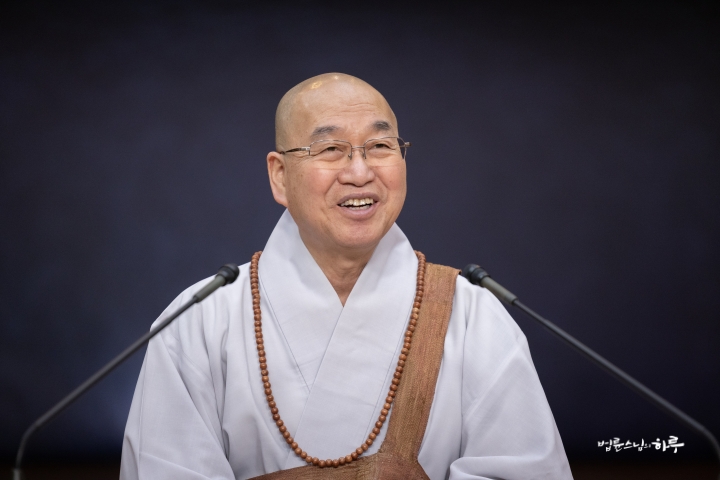
After concluding the entrance ceremony with the Four Great Vows, participants entered their respective virtual classrooms for introductions and greetings.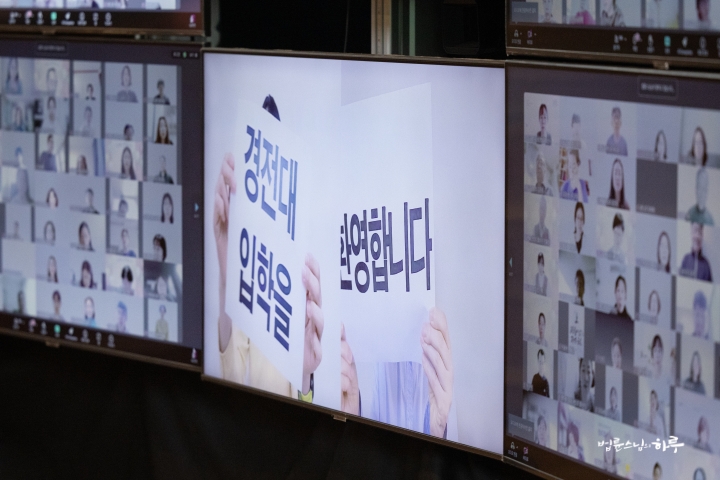
As the sun set, Sunim spent the evening working in the office and proofreading manuscripts before concluding his day.
Tomorrow marks the 85th anniversary of the passing of Master Yongseong, who revitalized modern Korean Buddhism and was a national independence activist. Sunim will travel to Jangsu Jungnim Temple to hold a special Dharma service in the morning, conduct a Dharma Q&A with Jungto Society members in the afternoon, attend the board meeting of the Baek Yongseong Memorial Foundation, and return to Seoul in the evening.
How Has Sunim Built Trust with People to Win Their Hearts?
Jun 28, 2025. - INEB Day 3, Visit to Bongamsa Temple, Discussion on Practice




